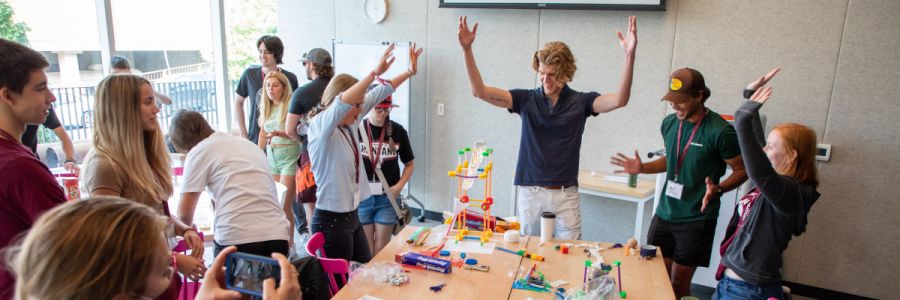Partners in Science
Through a grant from the M.J. Murdock Charitable Trust’s , the 91次元 facilitates paid summer research experiences for science teachers. Mentored by UM faculty members in natural science fields, participating teachers complete a research project over the course of two consecutive summers, with the opportunity to apply for additional Classroom Innovation Grants to extend what they learn in the lab into their classroom teaching. The program includes fully funded travel for teachers to two professional development conferences annually. Current middle and high-school teachers, as well as pre-service teachers preparing for science teaching careers, are eligible to apply.
How do I get involved?
Eligible participants include current middle or high school science teachers with a strong academic background in a natural science field (typically a bachelor’s degree or the equivalent) or pre-service teachers preparing for careers teaching science in middle school or high school science.
Teachers and pre-service teachers interested in applying, as well as UM researchers interested in serving as mentors, are encouraged to contact Nathalie Wolfram (nathalie.wolfram@umontana.edu).
Meet the 2025-2026 Cohort
Brian Connelly (Hellgate High School) is partnering with (Division of Biological Sciences) on research seeking to identify the processes that contribute to vegetation recovery following wildfire. At field sites in the Bitterroot and Beaverhead-Deerlodge National Forests, Connelly will be gathering data on the survival, size, reproduction, and recruitment (new seedlings generated) of three iconic Montana plant species commonly known as fireweed, lupine, and beargrass. The project aims to deepen understanding of the mechanisms for vascular plant recovery as wildfires increase in frequency and intensity across Western North America.
Christina Davis (UM College of Education, pre-service teacher) is partnering with (Division of Biological Sciences) on research aimed at understanding the impacts of metal contamination on small mammal populations in and around the Anaconda Smelter site. The project explores potential health and physiological consequences, evolutionary adaptations, and effects on the terrestrial food web resulting from the region's mining legacy.
Cara Grula (Sentinel High School) is partnering with Dr. Monica Serban, Dr. Katie Holick, and Dr. Elizabeth Arrigali (Biomedical and Pharmaceutical Sciences) on research into development of a novel, straightforward model for assessing the migration of cells in well-defined 3D culture environments. Through this project, which has implications for wound healing models, Grula will be involved in assessing cell behavior on different 2D substrates and in different 3D environments, as well as correlating experimental data with novel data analysis outputs.
Meet the 2024-2025 Cohort
Rita Coates (Big Sky High School) is partnering with (Physics & Astronomy) on astronomy research centered on the role of pulsars (rapidly rotating, highly magnetized neutron stars left behind after the violent supernova death of a medium-sized star) in the search for gravitational waves. Coates will build and refine models for several pulsars and will contribute to ongoing methods development for two upcoming International Pulsar Timing Array dataset releases.
Bryan Ferriter (Big Sky High School) is partnering with (Division of Biological Sciences) on research aimed at better understanding the ecological and genetic processes that generate and maintain plant variation at multiple scales, using highly diverse monkeyflowers (Mimulus) as a model system. Specifically, Ferriter and Fishman are testing the hypothesis that Yellowstone thermal monkeyflowers are uniquely cold-tolerant aboveground (leaves) and heat-tolerant belowground (roots), even within the highly diverse Mimulus guttatus species complex.
Brandon Honzel (Big Sky High School) is partnering with (Division of Biological Sciences) on research quantifying effects of shifting wildfire regimes (decreased intervals between wildfire and reduced time since wildfires) on plant community structure and population dynamics. Honzel is contributing to the Zettlemoyer lab’s collaborative research with the US Forest Service’s Missoula Fire Sciences Laboratory to monitor plant population demography and plant-pollinator interactions of native wildflowers at wildfire-impacted sites in Montana’s Sapphire Mountains.
